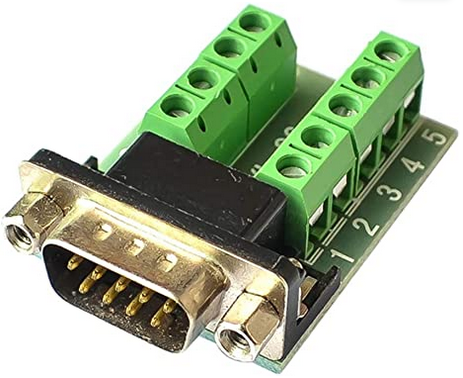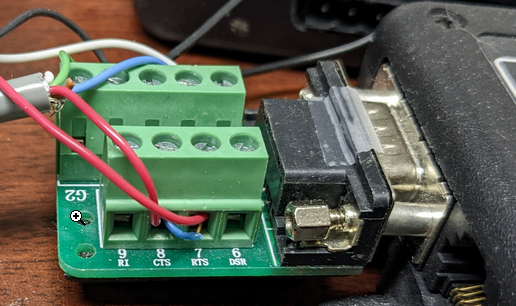RS-485 Wiring
The JNIOR 410 is capable of handling RS-485. To do this you need to wire it correctly.
While RS-485 is commonly referred to as 2 wire, it really should include a third wire for ground. You can get away with 2 wires as long as there is a common ground between all devices. This is hard to guarantee, especially on long runs. Including the third wire is always a good idea.
RS-485 should also include termination resistors at the end of the bus. This helps prevent reflection on the wire from corrupting the communications.
Here is an article from TI on Ten Ways to Bulletproof RS-485 Interfaces.
2 wire
Again, while referred to as 2 wire, a ground wire is good practice. In this wiring scenario D- will be landed on pin 3 and a small jumper wire will be used to connect pin 3 to pin 2. D+ will be landed on pin 7 or pin 8 and a small jumper wire will be used to connect pin 7 to pin 8.
Signal DB-9 -------------------- ------ Signal Ground (GND) 5 Data (D-) 2, 3 Data (D+) 7, 8
4 wire
While referred to as 4 wire, a ground wire is good practice.
Signal DB-9 -------------------- ------ Signal Ground (GND) 5 RS485 TX- 2 RS485 RX- 3 RS485 RX+ 7 RS485 TX+ 8
DB9 Breakout Connector
You can make wiring of the DB9 connector easier by obtaining a breakout board like this one from Amazon.

Here is an example of wires landing on pins 7 and 8 with a small jumper wire.

RS485 to RS232 converter
Use an RS485 to RS232 converter and let the JNIOR handle the RS232 data. This will enable 412 and 414 JNIORs to handle RS485.